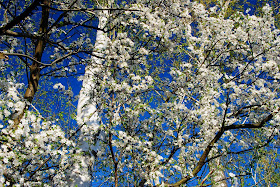
A few weeks ago Ziggy (
above, right), fellow Anglo-Pole hailing from the London Borough of Ealing, called me to see whether I would like to translate the last three chapters of a book by Stefan Bałuk (
above, seated). I immediately said yes, having read the book last year when it appeared in Polish.
Byłem Cichociemnym... (working title:
The Silent Dark Ones: I was a Polish WWII SOE commando) is a remarkable book.
The wartime experiences of the author, now 95, are remarkable for a number of reasons. Stefan Bałuk managed to escape Poland after it was devoured by Nazi Germany and the Soviet Union in September 1939; through Romania and the Middle East he reached France, joining a Polish armoured unit and seeing action in the French Campaign of May 1940. After the fall of France, he made it to England with Polish forces, where he volunteered for special forces duties. He trained as a secret agent who would be airdropped into occupied Poland. In April 1944 he made his jump, just months before the Warsaw Uprising. Stefan Bałuk participated in the Uprising from the beginning to the end. Because of his training, he was sent on a variety of dangerous missions which gave him what he calls 'a frog's eye view' of the entire tragic battle.
From Wola to Stare Miasto, from there to Żoliborz and Kampinos and back again, to Śródmieście and Mokotów, with many transits through the sewers linking the individual islands of the Uprising, as a liaison officer for the Uprising's HQ staff, he witnessed far more of the action than anyone else who had chronicled the events.
And as a diarist, his written record of events, aided by a fine memory, and top-quality cameras that went everywhere with him, have provided the raw materials for a testimony that is lucid and tightly written.
My father and mother-in-law are both veterans of the
Powstanie. As such I've read many accounts of Warsaw's 63-day doomed rising against the Nazis that delayed the Red Army's advance long enough to ensure that western Europe did not end up under Stalin's domination. Of all the books I've read on the subject, the 31 pages in the chapter about the Uprising in
Byłem Cichociemnym... brings it most clearly to life. The ebb and flow of battle, the inhuman brutality of the Nazis, the visceral terror of moving through claustrophobia-inducing sewers full of faecal matter knowing that at any moment a grenade dropped down a manhole can end it all for you; the heroism, self-sacrifice, dashed hopes and endurance of Warsaw's young insurgents are portrayed with the insight of someone who has had over six decades to consider it all.
The author's experience mirrors that of Poland; after his imprisonment as a German prisoner of war, he returned to Warsaw where he was soon arrested by the Soviet-backed communist authorities to spend a further year and half in prison.
Stefan Bałuk, now General (retired), is in fine form, walking without the aid of a stick and with a memory and wit as sharp as that of a man half his age. An inspirational character.
The book is available in Polish from
Askon (publishers Iwona and Ewa
above centre); we hope to have it ready in English in a couple of months. With us is Peter (
top left), a patron of Polish military history, without whom this project would not have been possible.
This time last year:
Pheasants and swans of JeziorkiThis time two years ago:
The aggregate ramp by W-wa Jeziorki station (now gone)
 ...for cycling to work.
...for cycling to work. Above: My way to work. Eight minutes after leaving home, I'm in the forest. A short run along this piece of woodland track and I'm on the main cycle path through the Las Kabacki, ul. Moczydłowska. At this time of year, at 8 am, the forest is gorgeous; the solitude, smells and sounds of nature are infinitely more pleasurable than the traffic jam on ul. Puławska.
Above: My way to work. Eight minutes after leaving home, I'm in the forest. A short run along this piece of woodland track and I'm on the main cycle path through the Las Kabacki, ul. Moczydłowska. At this time of year, at 8 am, the forest is gorgeous; the solitude, smells and sounds of nature are infinitely more pleasurable than the traffic jam on ul. Puławska.




























 This time last year:
This time last year:

















